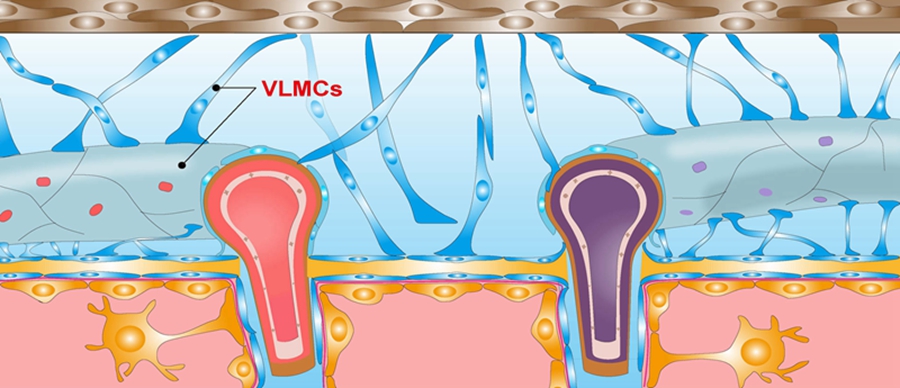According to a recent study published on
Journal of Genetics and Genomics, researchers led by Dr. WU Qingfeng from the Institute of Genetics and Developmental Biology of the Chinese Academy of Sciences revealed five aging hallmarks of the hypothalamus and identified fibroblast-like vascular and leptomeningeal cells (VLMCs) as a critical cell population which might exacerbate aging process through secretory factors.
Aging is featured by the time-dependent deterioration of physiological integrity in all living organisms. The aging of hypothalamic median eminence (ME), a structural and functional link between the brain and pituitary gland, disturbs hormone release, energy metabolism and inter-organ communication, which thereby cause systemic and reproductive aging. Therefore, it is fundamentally important to decipher the molecular and cellular features of hypothalamic aging, which will help us understand the mechanisms underlying brain aging and optimize the design of rejuvenating therapeutics.
In this study, the researchers performed unbiased, high-throughput single-cell RNA sequencing of hypothalamic ME from young and middle-aged mouse brains, and revealed the common and cell-type-specific transcriptional changes within aging hypothalamus. The aging-related changes in cell-intrinsic signaling, cell-cell crosstalk and cell-extrinsic factors suggest several potentially druggable targets at cellular and molecular levels.
Importantly, they suggested that different cell types age at different rates through distinct biological mechanism, and that VLMCs may lead the asynchronized aging process among diverse cell types and drive hypothalamic senescence via a unique secretome.
"This study not only describes five major hallmarks of aging hypothalamus but also provides an innovative perspective on the role of a fibroblast-like cell type in brain aging," said Dr. WU Qingfeng.
The study uncovers the intrinsic and extrinsic features of hypothalamic cells during aging, which will facilitate our understanding of brain aging and provide several potential strategies for optimizing health and increasing lifespan.
Graphical model showing the residence of VLMCs, fibroblast-like cells, in the subarachnoid space and the interface between subarachnoid and brain parenchyma. (Image by IGDB)







